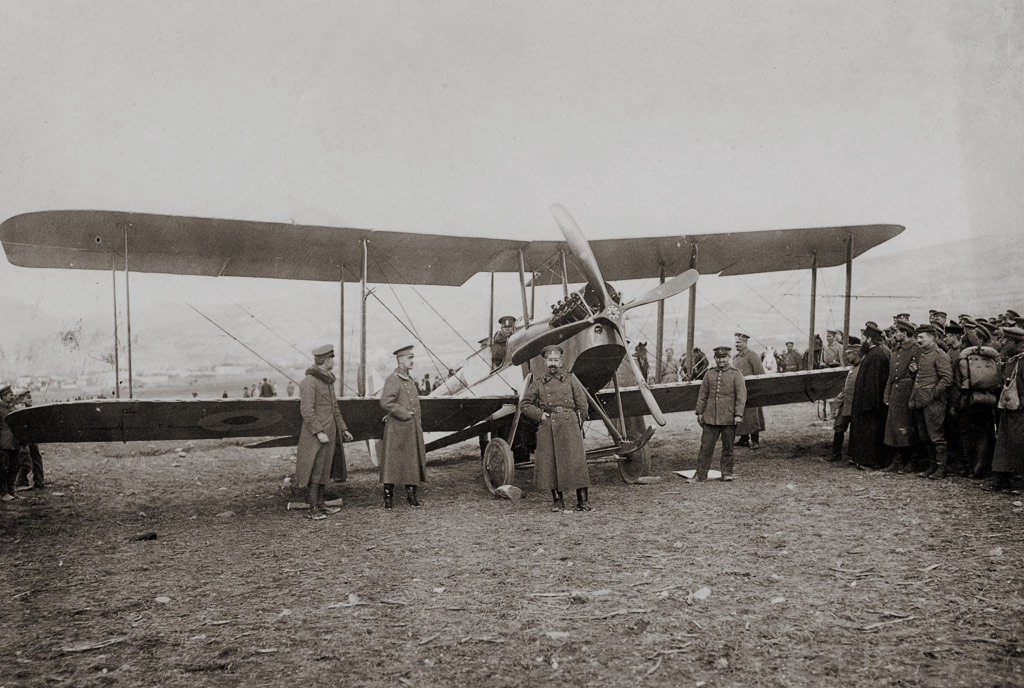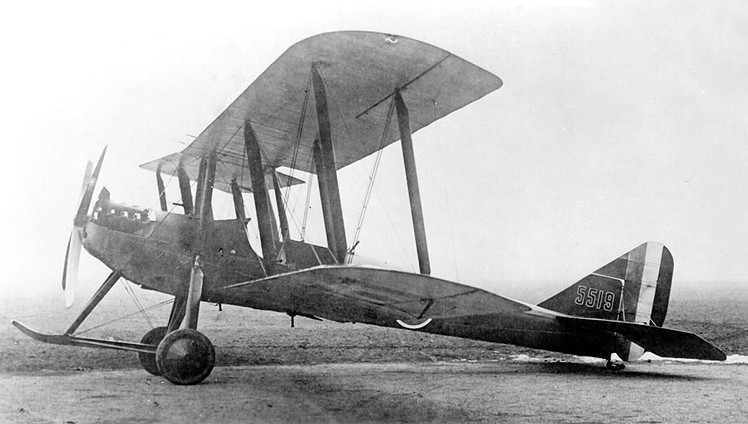Armstrong Whitworth F.K.3 on:
[Wikipedia]
[Google]
[Amazon]


 The Armstrong Whitworth F.K.3 was a British two-seat general-purpose
The Armstrong Whitworth F.K.3 was a British two-seat general-purpose


 The Armstrong Whitworth F.K.3 was a British two-seat general-purpose
The Armstrong Whitworth F.K.3 was a British two-seat general-purpose biplane
A biplane is a fixed-wing aircraft with two main wings stacked one above the other. The first powered, controlled aeroplane to fly, the Wright Flyer, used a biplane wing arrangement, as did many aircraft in the early years of aviation. While ...
built by Armstrong Whitworth Aircraft
Sir W. G. Armstrong Whitworth Aircraft Company, or Armstrong Whitworth Aircraft, was a British aircraft manufacturer.
History
Armstrong Whitworth Aircraft was established as the Aerial Department of the Sir W. G. Armstrong Whitworth & Company e ...
during the First World War. By the end of the war it was considered obsolete for combat.
History
TheDutch
Dutch commonly refers to:
* Something of, from, or related to the Netherlands
* Dutch people ()
* Dutch language ()
Dutch may also refer to:
Places
* Dutch, West Virginia, a community in the United States
* Pennsylvania Dutch Country
People E ...
aircraft designer Frederick Koolhoven
Frederick (Frits) Koolhoven (11 January 1886 – 1 July 1946) was an aircraft designer in Britain and his native Netherlands.
Koolhoven was born in Bloemendaal, Netherlands. After training as an engineer in Liège and Antwerp, he worked from 19 ...
joined Armstrong Whitworth in 1914. He designed a series of aircraft that had his initials in their designation. The F.K.3 followed the basic layout of the Royal Aircraft Factory B.E.2c, which Armstrong Whitworth were building for the Royal Flying Corps
"Through Adversity to the Stars"
, colors =
, colours_label =
, march =
, mascot =
, anniversaries =
, decorations ...
. It was designed as an improvement, with a simplified structure that was easier to build. The prototype, first flown by Norman Spratt was powered by a 70 hp (52 kW) air-cooled Renault 70 hp
The Renault 70 hp or Type WB was a French V-8 aero engine that first ran circa 1907. It was also manufactured under license by Renault Limited of West Brompton, London between August 1914 and December 1918, three other companies, includin ...
V-8. This aircraft differed from the B.E.2 in eliminating welded joints and complex metal components in the structure, and having greater dihedral on the upper wing. It retained the seating layout of the B.E.2, with separate cockpits for the pilot
An aircraft pilot or aviator is a person who controls the flight of an aircraft by operating its directional flight controls. Some other aircrew members, such as navigators or flight engineers, are also considered aviators, because they a ...
and observer
An observer is one who engages in observation or in watching an experiment.
Observer may also refer to:
Computer science and information theory
* In information theory, any system which receives information from an object
* State observer in co ...
, with the latter in front. An initial batch of seven aircraft to this standard, sometimes referred to as the F.K.2 were built.
This initial batch offered little improvement over the BE.2, and was rejected for service in France. Aircraft following this initial batch were completed to a revised design, with a new fin and rudder, its leading edge straight and lacking the earlier comma shaped horn balance, and powered by the Renault-related but more powerful 90 hp (67 kW) RAF 1
The RAF 1 was a British air-cooled, V-8 engine developed for aircraft use during World War I. Based on a French design, it was developed at the Royal Aircraft Factory, and built by six different British companies including Daimler, Rolls-Royc ...
a engine. Both crew were placed in a single, extended cockpit with the pilot forward, allowing the observer a more effective field of fire, although in the event few F.K.3s were flown with armament. Trials at Upavon
Upavon is a rural village and civil parish in the county of Wiltshire, England. As its name suggests, it is on the upper portion of the River Avon which runs from north to south through the village. It is on the north edge of Salisbury Plain ...
in May 1916 proved that the F.K.3 had a better performance in some respects than the B.E.2c, although it had a smaller useful load. Armstrong Whitworth were given a contract to build 150 aircraft with another 350 being built by Hewlett & Blondeau Limited at Luton
Luton () is a town and unitary authority with borough status, in Bedfordshire, England. At the 2011 census, the Luton built-up area subdivision had a population of 211,228 and its built-up area, including the adjacent towns of Dunstable an ...
. Some of the early batch had twin high exhaust pipes that exited above the upper wing in B.E.2 style, but these were later replaced with rams' horns forward stubs.
At one time during production of the F.K.3 there was a shortage of the RAF engines, and twelve aircraft were fitted with longer and heavier 120 hp (90 kW) six-cylinder inline water cooled Beardmore 120 hp. To carry the extra weight, span was increased by 2 ft (610 mm), but though the extra power enhanced the climb rate, top speed was little changed and these machines were converted back to RAF engines when they became available.
Operational Service
The F.K.3 was not adopted for use by operational squadrons of the RFC inFrance
France (), officially the French Republic ( ), is a country primarily located in Western Europe. It also comprises of Overseas France, overseas regions and territories in the Americas and the Atlantic Ocean, Atlantic, Pacific Ocean, Pac ...
, as the more capable F.K.8 and R.E.8
The Royal Aircraft Factory R.E.8 was a British two-seat biplane reconnaissance and bomber aircraft of the First World War designed and produced at the Royal Aircraft Factory. It was also built under contract by Austin Motors, Daimler, Standard ...
were both already in prospect. Only one overseas unit received the F.K.3 (which was 47 Squadron at Salonika
Thessaloniki (; el, Θεσσαλονίκη, , also known as Thessalonica (), Saloniki, or Salonica (), is the second-largest city in Greece, with over one million inhabitants in its metropolitan area, and the capital of the geographic region of ...
), all the other aircraft were based in the United Kingdom
The United Kingdom of Great Britain and Northern Ireland, commonly known as the United Kingdom (UK) or Britain, is a country in Europe, off the north-western coast of the continental mainland. It comprises England, Scotland, Wales and North ...
. Most of the aircraft were used for training
Training is teaching, or developing in oneself or others, any skills and knowledge or Physical fitness, fitness that relate to specific practicality, useful Competence (human resources), competencies. Training has specific goals of improving on ...
until replaced by the Avro 504
The Avro 504 was a First World War biplane aircraft made by the Avro aircraft company and under licence by others. Production during the war totalled 8,970 and continued for almost 20 years, making it the most-produced aircraft of any kind tha ...
.
Military operators
; *Australian Flying Corps
The Australian Flying Corps (AFC) was the branch of the Australian Army responsible for operating aircraft during World War I, and the forerunner of the Royal Australian Air Force (RAAF). The AFC was established in 1912, though it was not until ...
** No. 3 Squadron AFC – Used for training.
;
*Bulgarian Air Force
The Bulgarian Air Force ( bg, Военновъздушни сили, Voennovazdushni sili) is one of the three branches of the Military of Bulgaria, the other two being the Bulgarian Navy and Bulgarian land forces. Its mission is to guard and p ...
** One aircraft, No. 6219 captured in 1917
; –
*Royal Flying Corps
"Through Adversity to the Stars"
, colors =
, colours_label =
, march =
, mascot =
, anniversaries =
, decorations ...
/Royal Air Force
The Royal Air Force (RAF) is the United Kingdom's air and space force. It was formed towards the end of the First World War on 1 April 1918, becoming the first independent air force in the world, by regrouping the Royal Flying Corps (RFC) and ...
** No. 43 Squadron RFC
** No. 47 Squadron RFC
** No. 53 Squadron RFC
** No. 55 Squadron RFC
** No. 63 Squadron RFC
Specifications (F.K.3)
See also
References
Notes
Bibliography
* * * * * {{Koolhoven aircraft F.K.03 F.K.03 Biplanes Single-engined tractor aircraft 1910s British military reconnaissance aircraft Aircraft first flown in 1915